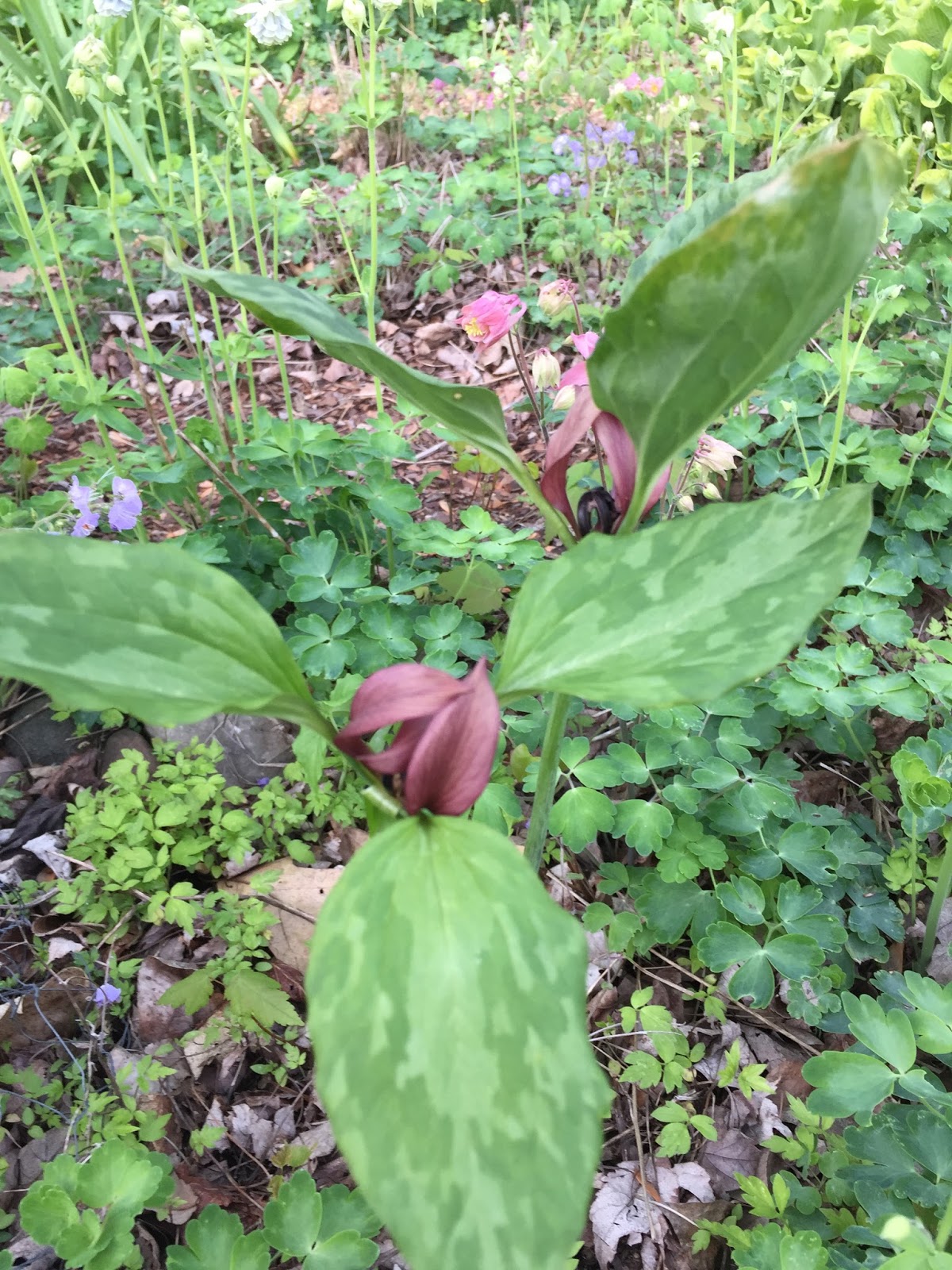
Great White Trilliums have been blooming in my garden for the last week or so. This lovely native wildflower goes by the name Trillium grandiflorum, which is easy to remember because these are definitely grand flowers.
Where did I get these wildflowers, you ask?
From a reputable company, Old House Gardens, who sources them from a nursery where they propagate them from their stock.
They do not stomp out to the woods, find a lovely stand of trilliums, dig them up, and sell them to unsuspecting buyers.
Nor should we gardeners tromp out to the woods, find some wildflowers we like, then dig them up and take them to our gardens where who knows if they will like the conditions and grow.
Buy responsibly.
Years ago, I did have the opportunity to dig some wildflowers from a wooded lot, but it was actually a rescue. They were going to dam up the area and create a big 15-acre lake. So I went around for a wild ride on an all-terrain vehicle looking for wildflowers.
When I’d spy one I’d yell stop, wait for the driver to stop the vehicle, then jump out and dig up the wildflower and put it in a bag. I only had an hour or so but did come back with a few cool plants, including some Wake Robin Trillium, Trillium erectum.

On that rescue trip I also dug up a few Jack-in-the-Pulpit, Arisaema triphyllum, and planted them out in my garden.
Later, I talked to someone at a reputable nursery where they sell all kinds of Jack-in-the-Pulpits and he told me that most likely my wild collected Jacks had rust disease. He told me what to look for.
I looked when I got home and sure enough, several did have rust disease. I popped those out right quick and threw them in the trash.
Which is another reason to buy from reputable companies. They won’t sell you diseased plants. Or shouldn’t.
So there you go, for your garden’s sake, your sake, and the sake of the woods, buy wildflowers only from reputable companies who are propagating from stock and not collecting from the wild.
Lecture over. Now go to Clay and Limestone and enjoy other posts for Wildflower Wednesday.
Go on. It’s spring. I don’t have time to tell you more.
Go.


Great post…and timely, since so many beauties that might temp someone are blooming in the woodlands.
Well done for rescuing some wildflowers!
Such an important post Carol. Great one.~~Dee
Excellent advice.
Pretty wildflowers!
And I certainly agree – don't dig up and move wildflowers from their native habitats (unless, as you say, it is a rescue)
Happy Wildflower Wednesday!
Enjoyable and informative!
There have been times I've propagated plants found in the wild; however, I always leave plenty of material behind to grow. If I find a patch of wildflowers on a walk, I will often take a few seed heads and plant or scatter them further. It's a shame so many developments have plowed under native ecosystems and replaced them with grass monocultures and a smattering of toxic shrubs and non-native trees. Good post.
There are appropriate times to dig (such as yours and a couple of circumstances of my own) and there are times to gather seeds – as I did for my Jacks-in-the-Pulpit from which I gathered seeds. 🙂 They are quite at home in my woodland backyard, and it is a thrill when they show themselves!
Happy Spring!!
SG
Nice blog is this and It have lots of Information on it.Cartincoupon.com